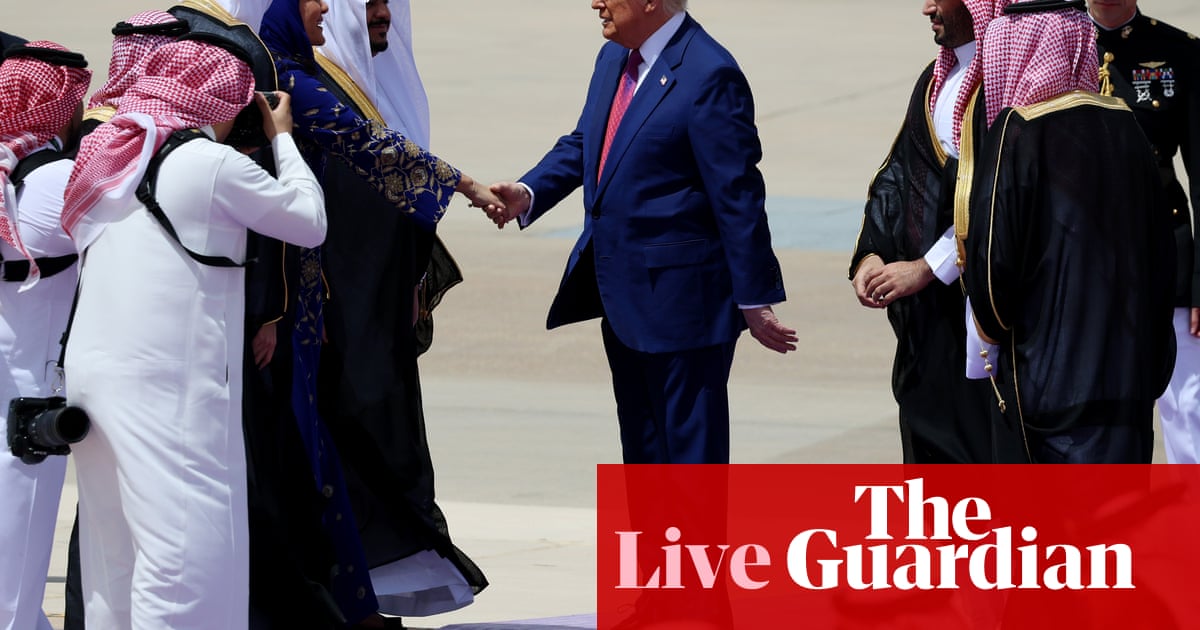WASHINGTON — As he prepared to take office for a second time, Donald Trump made it clear to his economic team that his tariffs needed to be imposed quickly.
One candidate for a top position suggested to him during the transition that it might be a better idea to move more deliberately. He didn’t get the job, a person briefed on the matter said.
“He [Trump] was not very sympathetic” to those advising a go-slow approach, the person said, speaking on condition of anonymity.
The president is in a hurry. Executive orders, tariffs, mass firings — all are happening at a speed that has made it hard for the nation to keep up. And tough for Trump to carry out.
The chaotic start of his presidency has been characterized by a rash of reversals and retreats as he hastens to execute his agenda while his party controls both houses of Congress and his political capital is at its peak.
His advisers are well aware of a looming deadline: the midterm congressional elections a year and a half from now. If Republicans lose control of Congress, the Trump presidency could well be over for practical purposes. Democratic majorities would surely block any ambitious legislative initiatives, and, armed with subpoena power, they could paralyze the back half of his presidency through investigative hearings.
Donald Trump in the Oval Office on April 9.
“Trump has hindsight from the first term that if he doesn’t get things done now, he won’t ever get them done,” John McLaughlin, a Trump pollster, said in an interview. “And he realizes, too, from his first term that if he doesn’t get things done and he loses the House and the Senate in the midterms, he’ll get impeached again."
Investors and everyday Americans alike seem anxious about what’s to come. A closely watched consumer confidence report from the University of Michigan found that sentiment this month had fallen 11% from March and 34% from a year before. The share of consumers who believe that unemployment will rise over the next year is at its highest level since 2009, during the global financial crisis.
Another measure that tracks expectations of how markets will fluctuate over the coming month — dubbed the “fear” or “panic” index — reached its highest point last week since the Covid-19 pandemic.
'Move fast and break things'
A cost of moving so fast has been collective confusion over what Trump has done thus far and whether his actions have actually stuck.
The administration’s aggressive effort to deport undocumented immigrants deemed threats to the country has collided with court rulings that insist on due process.
By its own admission, the administration mistakenly deported a Maryland man, Kilmar Abrego Garcia, to a notorious prison in El Salvador in its haste to rid the United States of alleged Venezuelan gang members. The Supreme Court ruled last week that the Trump administration must “facilitate” Abrego Garcia’s return.
Guards lead a man Jennifer Vasquez Sura identified as her husband, Kilmar Abrego Garcia, through the Terrorism Confinement Center in Tecoluca, El Salvador.
Under billionaire mogul Elon Musk, the administration has moved swiftly to shrink the government, firing thousands of probationary employees and others deemed expendable. The effort has upended the lives of government workers who’ve abruptly found themselves out of jobs — or rehired later, in some cases.
The Trump administration has full authority to downsize the pool of probationary employees. No judge has said otherwise. It’s how the administration has gone about it that has confounded the judiciary.
“Move fast and break things,” U.S. District Judge James Bredar said at a hearing in Maryland about the government’s attempts to fire workers across the country. “Move fast, fine. Break things? If that involves breaking the law, then that becomes problematic.”
A typical reduction-in-force calls for ranking personnel based on factors that include job performance and military service. Once that review is finished, employees are supposed to get 60 days’ notice. The process normally takes about a year. At some agencies, it was compressed into a weekend, with employees learning of their dismissals through mass emails.
A byproduct of the downsizing is disruption in government services that many Americans take for granted.
At the Social Security Administration, the agency that provides benefits to nearly 70 million people each month, more than 28% of customers got busy signals when they phoned in March — up from 1.5% from the month before. Only 39% managed to reach agents by phone last month, compared with 71% last May.
“Our worst enemies could not design a better way to harm our government than what is going on right now,” said Max Stier, founding president and CEO of the Partnership for Public Service, a nonprofit organization that aims to make government more effective.
Trump’s tariff policy is now something of a “Red Rover” game, with Trump inviting scores of countries that had been hit with tariffs to come over and negotiate trade deals he finds palatable. He set a 90-day reduction in tariffs he announced this month while the talks unfold.
Watching from up north, Canada was confused about Trump’s abrupt announcement and struggled to sort out which tariffs still applied, a Canadian official told NBC News.
“As far as Canada is concerned, it wasn’t entirely clear to us exactly which of the tariffs he had put on and which were taken off,” the official said, speaking on condition of anonymity. “There were competing explanations as to what was happening. It would appear that the steel and aluminum tariffs are still on, which is very expensive for us and for the Americans.
“There’s no real method to it, and there’s no geopolitical connection," the official added. "It’s all quite strange.”
New trade agreements take time. In Trump’s first term, it took years for him to implement a trade deal with just two countries, Mexico and Canada.
Lengthy negotiations with European and Asian trading partners could prolong the uncertainty over tariffs that tend to raise consumer prices. And failure to reach a deal could trigger more of the stock market declines that caused 401(k) retirement savings to plummet this month.
China is an even tougher proposition. Trump went ahead with tariffs on China last week, opting to raise them to 145%. China retaliated in kind, touching off a trade war with no end in sight.
Another puzzling development came this weekend. Late Friday, the Trump administration sent a notice that appeared to withhold tariffs on laptops, smartphones and other tech products made in China, making them more affordable. But on Sunday, Commerce Secretary Howard Lutnick said those items would be covered in an upcoming round of tariffs.
Bob Davis, a journalist who co-wrote a history of Trump’s first trade war with China in the book “Superpower Showdown,” said that in the first term, the talks with China proceeded in a more orderly fashion than is happening now.
Back then, there were public hearings to ensure that American firms didn’t get hurt by tariffs more than China. While Trump made the final decisions, he followed the advice of seasoned trade officials like Robert Lighthizer, Davis said.
“This time,” Davis continued, Trump imposed “enormous tariffs” and left “no time to negotiate and no process for U.S. firms to argue that they would be hurt more by U.S. tariffs than China or other trading partners.”
Asked for comment, Kush Desai, a White House spokesman, said: “The only interest guiding President Trump’s decision making is the best interest of the American people. President Trump hiked tariffs on China and paused other reciprocal tariffs for 90 days after he and his economic team received good-faith commitments from a majority of our trading partners willing to strike favorable trade deals.
"The Trump administration remains committed to using every tool at our disposal to address the national emergency posed by chronic trade deficits — including both tariffs and negotiations," he added.
Waiting for clarity
Mark Overbay and his wife are founders of Big Spoon Roasters, a small-batch food business in Hillsborough, North Carolina. The company employs 15 people full time and makes specialty nut butters: cashew butter with coconut nectar, carrot cake almond and walnut butter, and almond butter with wildflower honey, among them.
Because certain spices and cashews aren’t grown in the United States, Overbay gets them primarily from Vietnam and other countries. And because the glass jars he needs to package his products aren’t made in the United States, he gets them from China. Trump’s tariffs threaten to raise his costs.
“There’s no magic switch we can flip that will bring to life this dormant American glass container industry that just doesn’t exist,” he said in an interview.
After Trump announced the tariffs on what he called “Liberation Day,” April 2, some suppliers that import cashews sent notifications that they’d be raising prices. What’s more, Overbay said, the back-and-forth announcements on tariffs have made it hard to for him to give retailers the required notice of any price or specification changes in the product.
“If we change jars or size of anything that changes the customer experience, they need notice,” Overbay said. “So we’re constantly behind, trying to keep up with the tariff news. It’s hard to follow.
“We would love to see more clarity around the long-term plan in terms of how this is going to help American businesses of all sizes,” he continued. “A lot of communities depend on the kind of stability and predictability and reliability that consumers need in order to plan their budgets and shop for goods and service. What’s the long-term plan that will secure economic stability and protect American small business in relation to these tariffs?”
So much to explain
Every president has a preferred method of communicating complex policy. During the Depression, Franklin Roosevelt helped restore confidence in the U.S. economy through fireside chats that went out over the radio.
John F. Kennedy used a televised Oval Office address to warn Americans of the mortal threat posed by Russia’s installation of nuclear missiles in Cuba. Barack Obama preferred set speeches that may have been nuanced and analytical to a fault.
Trump largely speaks to the country through all-caps social media posts that go viral and freewheeling exchanges with the news media. No one can argue that his methods helped him win the nation's highest office. But at this moment, he’s attempting so much so quickly that he's testing the limits of what a distracted American public can absorb.
A scorecard of Trump's first 100 days shows that he's trying to end the war between Russia and Ukraine, strike a deal with Iran over its nuclear weapons program, rebuild the American manufacturing base, acquire Canada and Greenland, avenge the mistreatment he believes he was shown subjected to during his first term and turn the war-ravaged Gaza Strip into a high-end resort destination.
All at once.
Vice President JD Vance and second lady Usha Vance tour the U.S. military's Pituffik Space Base on March 28 in Greenland.
"The challenge that Trump has is that’s he’s trying to solve so many important issues all at once, and a lot of them are very difficult," said McLaughlin, the Trump pollster. "They’re hard, and they take time."
That having been said, Trump wouldn't want to scale back his ambitions.
"That’s not his personality," McLaughlin said. "That’s not his nature."
This article was originally published on NBCNews.com

 German (DE)
German (DE)  English (US)
English (US)  Spanish (ES)
Spanish (ES)  French (FR)
French (FR)  Hindi (IN)
Hindi (IN)  Italian (IT)
Italian (IT)  Russian (RU)
Russian (RU) 


























Comments